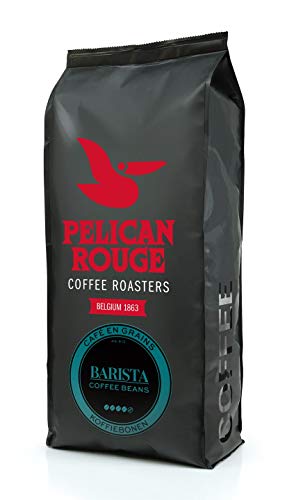Types of Coffee Beans
Behind every cup of coffee we drink there are carefully graded beans. The beans are evaluated according to their size, color, shape and density.
The AA rating is given to coffee beans that fulfill the criteria above, with the exception that they must not contain more than 3 defects (quakers). Most often, these are Kenya AA beans.
Arabica
Arabica coffee beans are also referred to as Coffea Arabicica and are the most sought-after coffee bean in the world. The legend says that coffee was discovered in Ethiopia when goat herders noticed their herd swaying with more energy after eating the fruits of the coffee plant. This led him experiment with roasting the seeds and then brewing them, which resulted in the beverage that we love today.
There are a myriad of varieties of coffee plants, but only two are used to make our top brews, robusta and arabica. The former is generally considered to be superior to the other, and this is evident in the taste of the finished beverage.

There are many different arabica cultivars. Each one has distinct flavor profiles. Two of the most well-known varieties are Typica and Bourbon, from which the other varieties of arabica have been created, either through natural mutations or through deliberate crossbreeding. The SL28 cultivar, for instance was created in Kenya by Scott Labs and is known for its distinct chocolatey flavor.
The taste of an arabica variety will be determined by the conditions under the area it is grown and also on how it is handled and cooked. The type of shade that a tree receives will have a major impact on the final product.
Robusta
Robusta coffee beans, also referred to as coffee canephora are the second most popular kind of coffee. They are used in most instant coffees. They also contain twice the amount of caffeine as Arabica Coffee Beans. They also are used to make many espresso blends specifically for cappuccino caffe latte, and many other coffee drinks.
Coffea Canephora is a plant that originated in Sub-Saharan Africa. It has been cultivated across the world since. It can grow at lower altitudes and can tolerate higher temperatures than the Arabica coffee plant, which makes it a more convenient crop for farmers. top rated coffee beans is the world's biggest producer of robusta followed by Brazil and Indonesia.
The robusta plant is a great coffee however it's not popular with cupping enthusiasts because of its bitter taste and burnt-rubber aroma. Most major coffee companies utilize arabica bean for their top-quality products since it's considered to be lower-quality coffee.
The demand for gourmet coffees is increasing, and small roasters are experimenting to take advantage its superior qualities. Our Valhalla Java coffee and Death With Coffee coffee are two examples. Both are exceptional robustas that are blended with arabica to achieve the perfect balance of strength and flavour. These coffees originate from Uganda, a country where robusta has been cultivated for a long time. You can read more about them here.
Liberica
Liberica coffee beans are an uncommon variety that is rarely used in the world. They make up less than 2% the world's consumption of coffee beans and are often overlooked because they do not contain the same amount of caffeine. They have a distinctive flavor that many coffee drinkers find irresistible.
Despite being extremely scarce, Liberica coffee beans are still fairly popular in parts of Asia. The most common place for these beans is in Malaysia and Indonesia where there is a large Muslim community. In these countries, the coffee industry has been very strong for many years. The consumption of a cup of coffee following a prayer is a part of their culture.
The background of Liberica coffee began in the 1890s when a global epidemic of coffee leaf rust wiped out most of the world's arabica crop. This incident prompted coffee farmers to look for a resilient plant that could thrive in tropical climates. They soon found the Liberica.
Liberica plants are resistant to pests and diseases which makes them an ideal replacement for the devastated arabica crop. Liberica is also able to thrive in lower altitudes as well as hot temperatures that allow it to thrive in Southeast Asia's climate. This is why today the majority of coffee produced in the Philippines, Indonesia, and Malaysia comes from Liberica beans.
Excelsa
Although it is not common for coffee lovers to find excelsa beans, they are gaining the reputation of having a distinctive flavor. According to Komal Sable, a fifth generation coffee farmer at South India Coffee Co., these beans are "a variant of the liberica species with the same teardrop shape, but are smaller in size." It is important to note that, despite the resemblance of family between excelsa and liberica however, this species is not distinct from the other species.
In this way, it's a bit hazy as to how excelsa beans should be classified. It's this confusion that's been the cause of the beans' insignificant presence in the contemporary world of coffee. Many roasters, farmers, and brewers are unaware of how to properly cultivate and utilize these beans.
It is ultimately up for the individual to decide what they prefer about the taste of excelsa coffee. It could take a bit of time to find a blend that matches their preferences. The most important thing is to remain open to new ideas and give every kind of coffee a try until you discover one you really enjoy. By doing so you'll be able enjoy the full variety of possibilities these unique beans can provide. It's a journey worth the journey.
